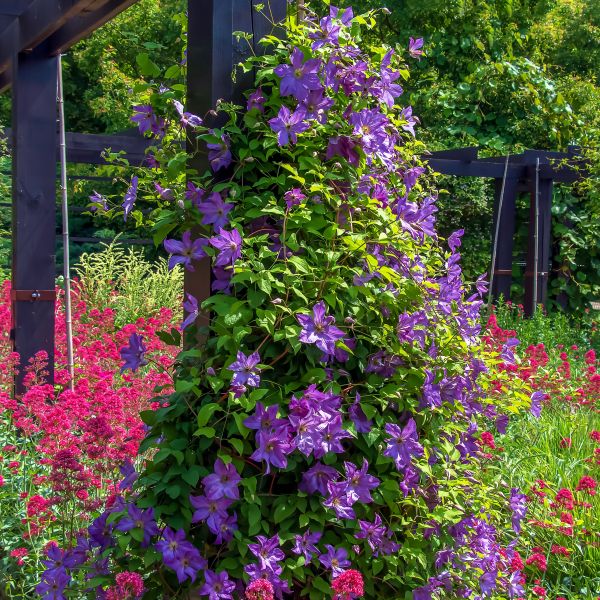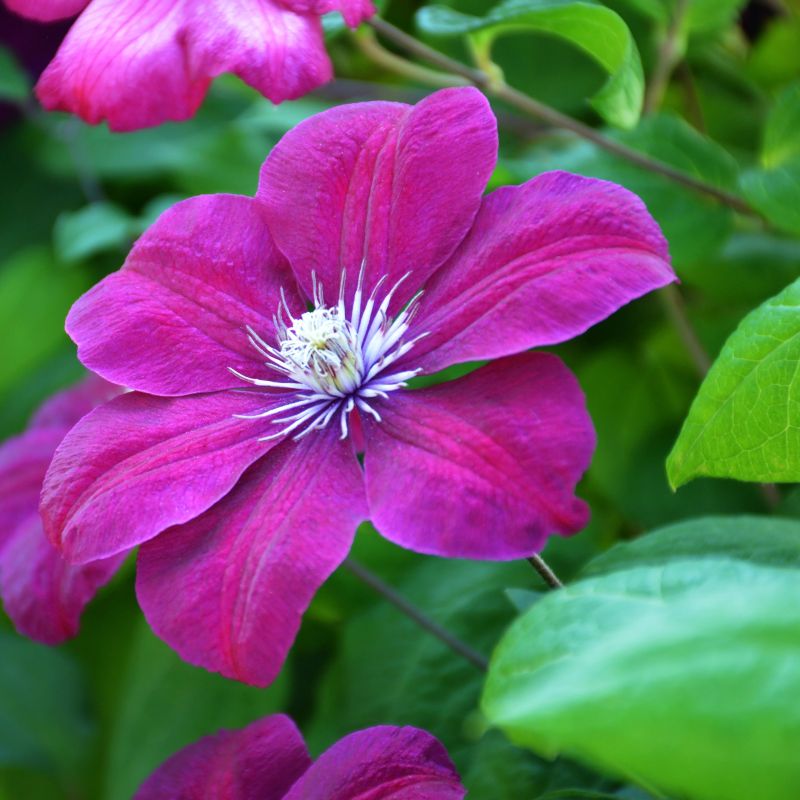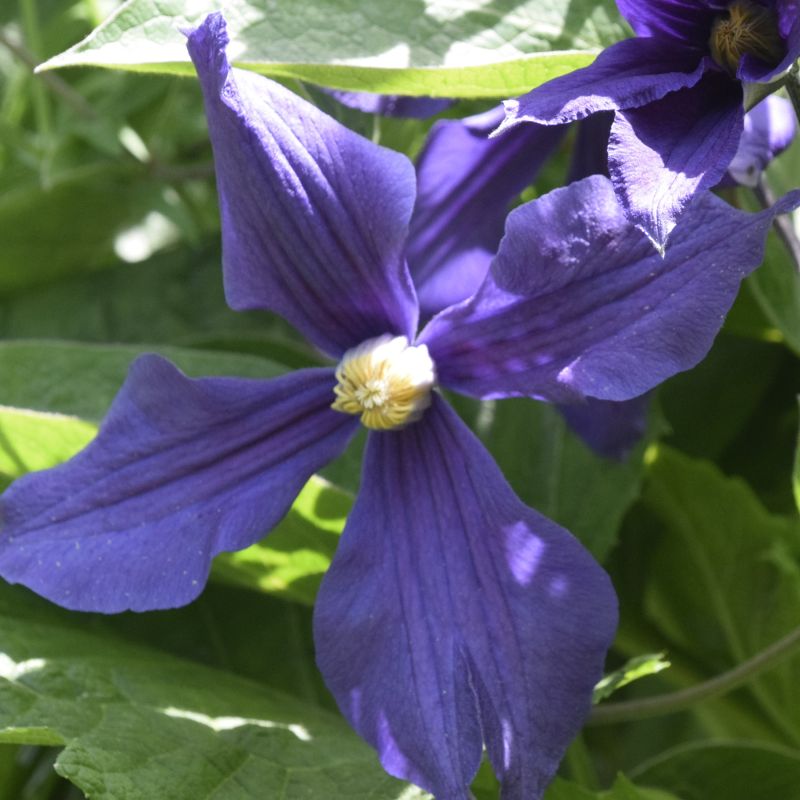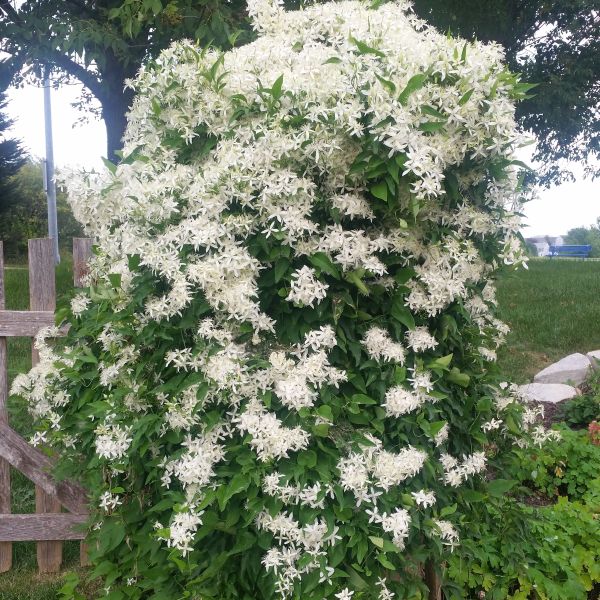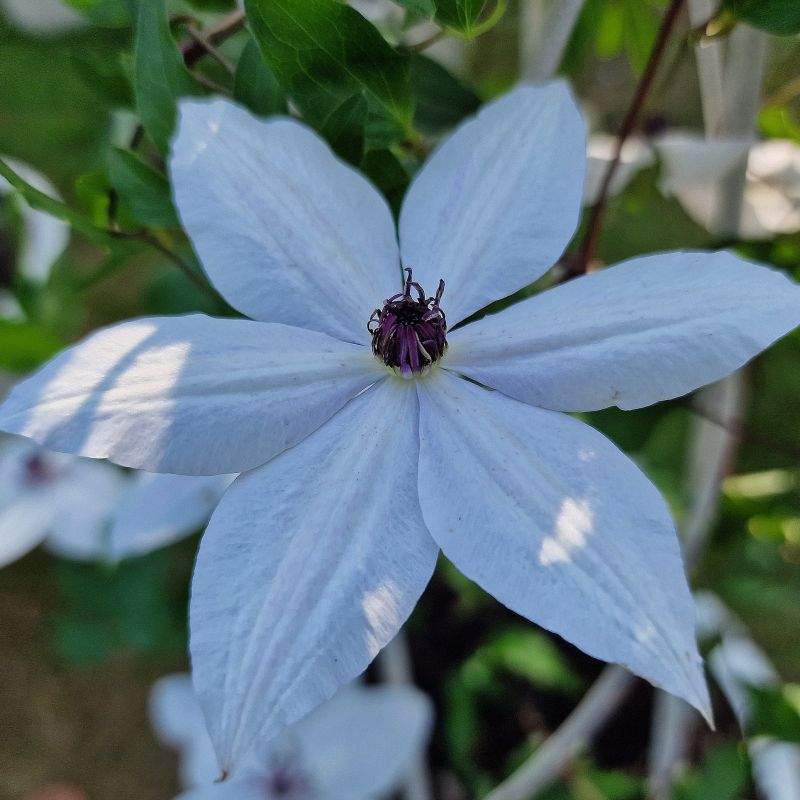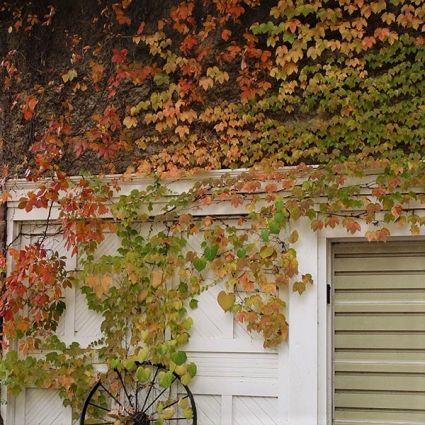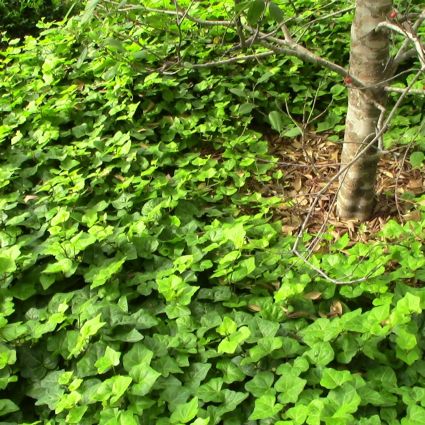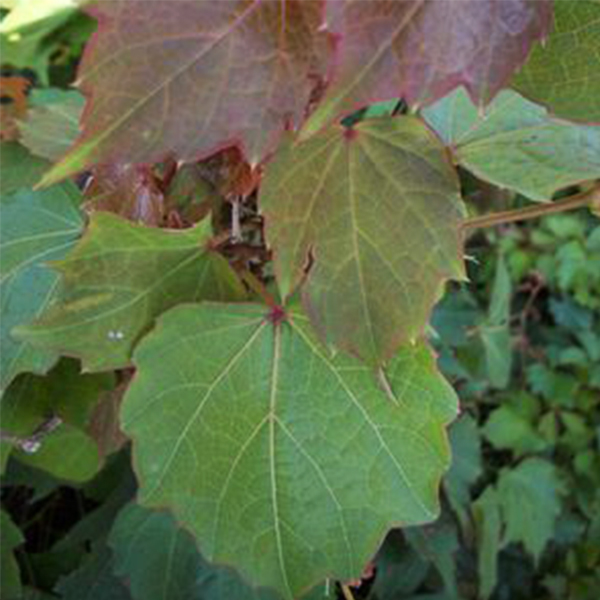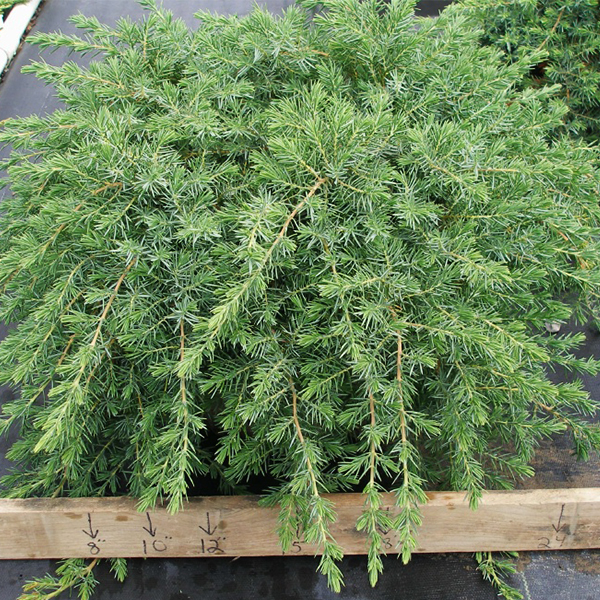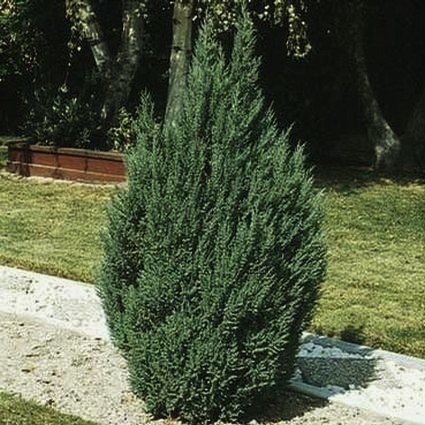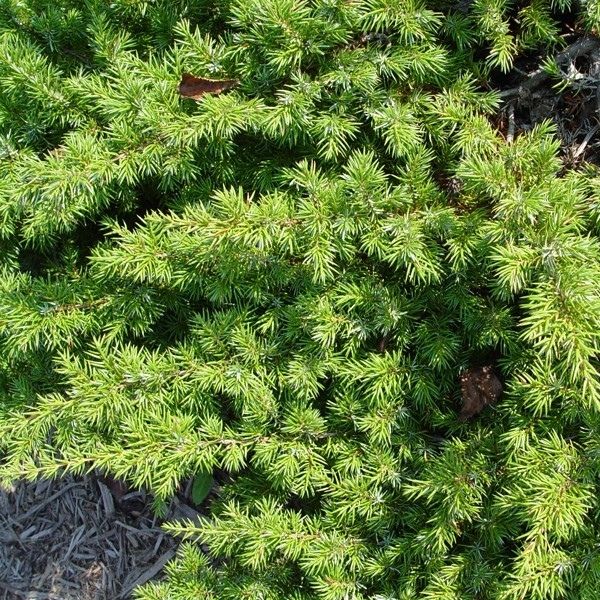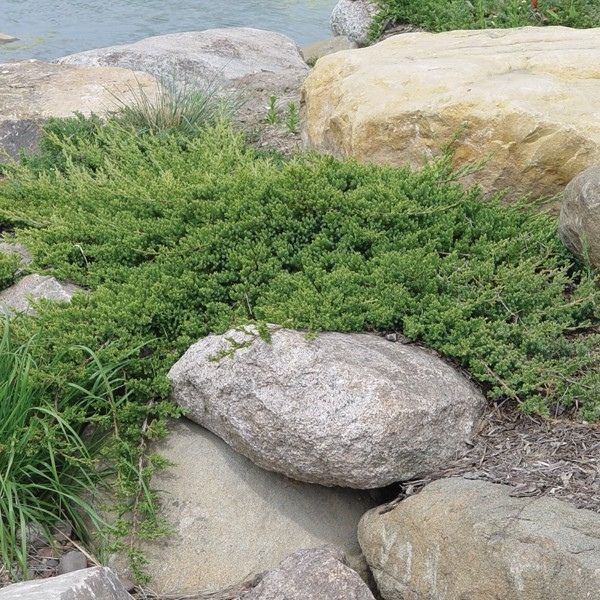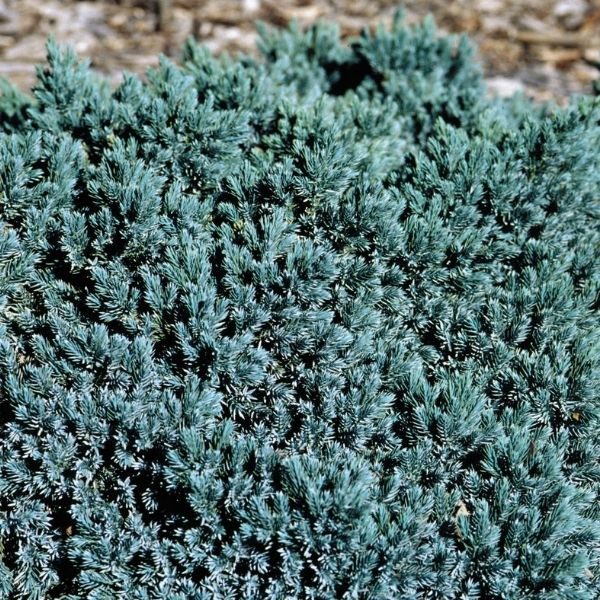
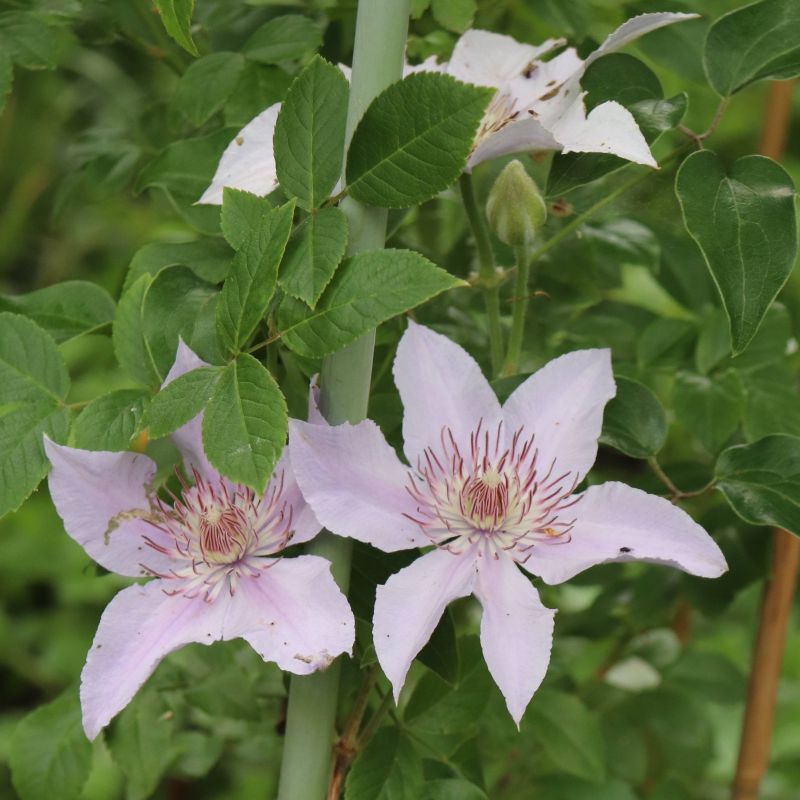
Filigree Clematis
Clematis 'Filigree'
6 reviews
Filigree Clematis
Clematis 'Filigree'
6 reviews
1 Gallon
We are sorry, product is currently out of stock due to seasonal availability. Please check the "Related plants available in your area" section below
Not just beautiful - intentionally selected by ShrubHub's 3D landscape design team to fit real-world spaces and maximize yard potential.
Why Filigree Clematis?
Filigree Clematis is a stunning variety known for its intricate, lace-like blooms that add a touch of elegance to any garden. These delicate flowers feature a pale pink hue with darker pink veining, creating a beautiful contrast. With its vigorous growth habit, Filigree Clematis can quickly cover trellises, fences, and arbors, making it a fantastic choice for adding vertical interest to your landscape.
Related plants available in your area
Sunlight
Filigree Clematis requires full sun to partial shade for optimal growth and flowering. It is best to place them in a location that receives at least six hours of direct sunlight per day. Too much shade can result in reduced blooming and growth.
Watering
Filigree Clematis plants require regular watering, particularly during hot and dry periods. Soil should be kept consistently moist but not waterlogged. Mulching around the base of the plant can help retain moisture in the soil and prevent water evaporation
Fertilizing
Filigree Clematis benefits from a balanced fertilizer applied in the spring before new growth begins. Use a slow-release 10-10-10 fertilizer or a specifically formulated clematis fertilizer. Avoid high-nitrogen fertilizers that can promote excessive leafy
Filigree Clematis (Clematis 'Filigree')
The Filigree Clematis, also known as Clematis 'Filigree', is a stunning flowering vine that adds elegance and beauty to any garden or landscape. This vigorous, deciduous climber features gorgeous, fully-double, silvery-blue flowers that resemble a pom-pom. The blooms appear in late spring to early summer and continue to add color and charm throughout the season.
This clematis variety is perfect for trellises, fences, or arbors, where it can climb and twine gracefully. It prefers full sun to partial shade and thrives in well-drained, fertile soil. Regular pruning after flowering helps maintain its shape and promotes new growth for the following season.
The Filigree Clematis is a versatile plant that can be used as a standalone specimen or combined with other climbers for a stunning display. Its delicate, intricate blooms are sure to attract butterflies and other pollinators to your garden, making it a valuable addition to any landscape.
Plant Information:
| Botanical Name: | Clematis 'Filigree' |
| USDA Zones: | 4 - 9 |
| Exposure: | Full Sun |
| Soil Needs: | Widely Adaptable |
| Mature Height: | 12 - 24 inches |
| Mature Spread: | 12 inches |



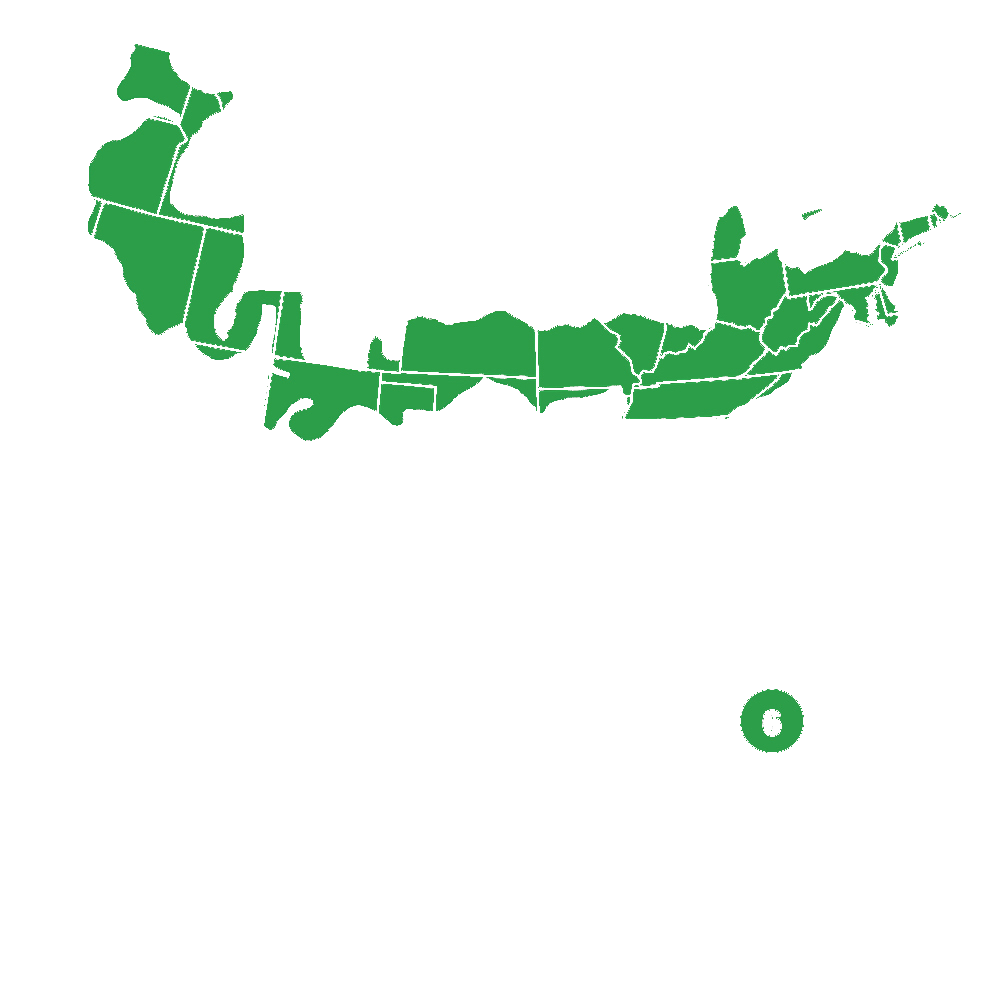

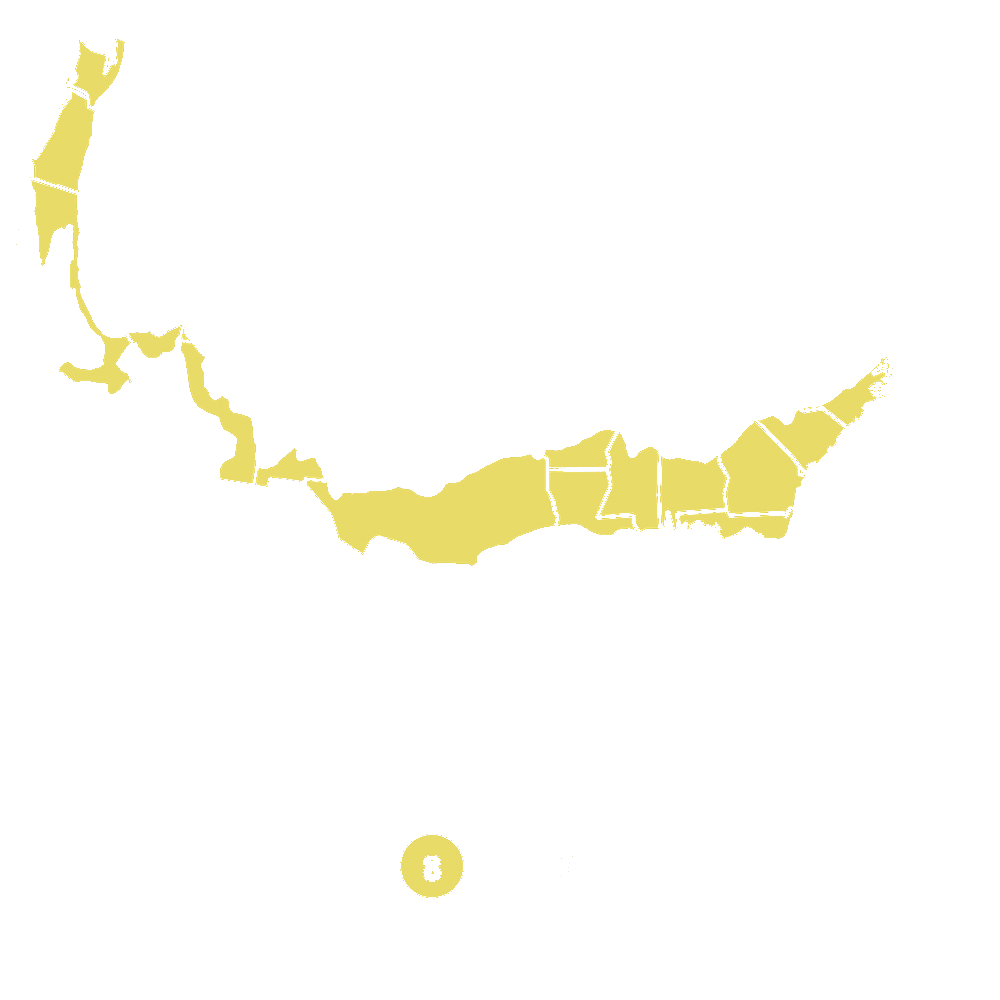

Pollination Info
Filigree Clematis (Clematis 'Filigree') Pollination Info:
Filigree Clematis is a beautiful flowering vine that produces showy, delicate flowers that attract pollinators such as bees, butterflies, and hummingbirds. These pollinators are essential for the plant's reproduction process.
The flowers of Filigree Clematis are pollinated by insects such as bees and butterflies that are attracted to the sweet nectar and bright colors of the blooms. As the insects visit the flowers to feed on nectar, they inadvertently transfer pollen from one flower to another, allowing for fertilization and the production of seeds.
Hummingbirds are also attracted to Filigree Clematis due to the tubular shape of the flowers, which allows them to easily extract nectar with their long beaks. They also play a role in pollination by transferring pollen between flowers as they feed.
It is important to plant Filigree Clematis in a location where pollinators can easily access the flowers, such as in a sunny spot with plenty of open space for butterflies and bees to fly around. Providing a variety of pollinator-friendly plants in the garden can also help attract a diverse range of pollinators to the area.
FAQ
Filigree Clematis (Clematis 'Filigree') FAQ
What is Filigree Clematis?
Filigree Clematis is a flowering vine known for its intricate and delicate-looking blooms. It belongs to the Clematis genus and is a popular choice for trellises, arbors, and fences in gardens.
How do I plant Filigree Clematis?
Plant Filigree Clematis in well-draining soil in a location that receives full sun to partial shade. Dig a hole that is twice as wide as the root ball and plant the vine so that the base of the stem is level with the ground. Water thoroughly after planting.
How do I care for Filigree Clematis?
Water Filigree Clematis regularly, especially during dry spells. Mulch around the base of the plant to help retain moisture and suppress weeds. Prune the vine in early spring to remove any dead or weak growth and to shape the plant.
When does Filigree Clematis bloom?
Filigree Clematis typically blooms in late spring to early summer, producing an abundance of delicate, filigree-like flowers. Some varieties may have a second flush of blooms in late summer or early fall.
Can Filigree Clematis be grown in containers?
Yes, Filigree Clematis can be grown in containers as long as the container is large enough to accommodate the vine and has adequate drainage. Make sure to water the plant regularly and provide support for the vine to climb on.
How can I support Filigree Clematis as it grows?
You can provide support for Filigree Clematis by placing a trellis, obelisk, or arbor near the plant for it to climb on. Alternatively, you can train the vine to climb up a fence or wall using garden twine or plant ties.
Planting & Care
Planting & Care for Filigree Clematis (Clematis 'Filigree')
Planting: Choose a location with well-draining soil and full sun to partial shade for your Filigree Clematis. Dig a hole twice as wide and deep as the plant's root ball. Place the plant in the hole and backfill with soil, gently patting down to remove any air pockets.
Watering: Water your Filigree Clematis regularly, especially during dry periods. Make sure the soil is consistently moist but not waterlogged. Deep watering is preferable to frequent shallow watering.
Pruning: Prune your Filigree Clematis in late winter or early spring to remove any dead or damaged growth. You can also prune lightly after the first bloom to encourage a second flush of flowers.
Fertilizing: Feed your Filigree Clematis with a balanced fertilizer in early spring before new growth appears. Avoid over-fertilizing, as this can lead to excessive foliage growth at the expense of flowers.
Support: Provide a trellis or other support for your Filigree Clematis to climb. The plant can grow up to 8 feet tall and will need something to cling to as it expands.
Pests & Diseases: Keep an eye out for common clematis pests like aphids and spider mites. Treat any infestations promptly with insecticidal soap or neem oil. Proper air circulation and good drainage can help prevent fungal diseases.
With proper care and attention, your Filigree Clematis should reward you with beautiful blooms from spring through fall.
Check Out These Verified Customer Reviews:
Customer Reviews
4.7 out of 5 based on 6 reviews
Thank you! Your review has been submitted.
Item arrived in perfect condition
Great quality for the price
I recently purchased the Filigree Clematis and was impressed by the intricate details and sturdy build. The item arrived in perfect condition and looked even better in person. The website was user-friendly and the customer service was helpful in answering my questions.
Item has been added to your cart.



